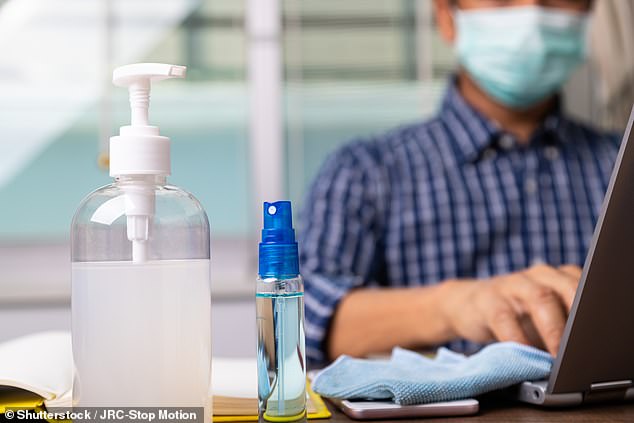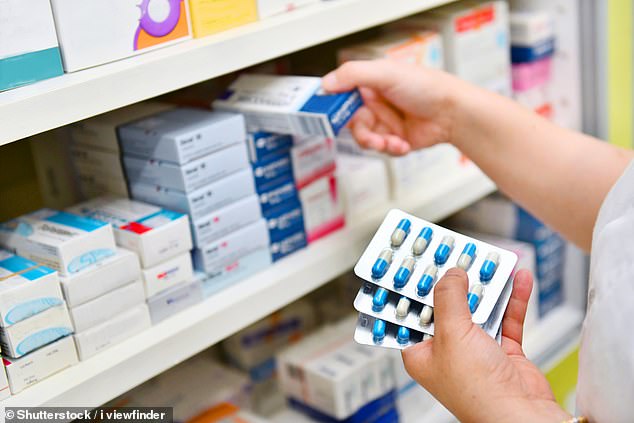Warning that using bleach at home may be fuelling superbugs
- Scientists worry that chemical mixtures that kill bacteria could cause drug resistance
- Antibiotic resistance is responsible for millions of deaths worldwide every year
The use of bleach and alcohol in hospitals and homes could encourage drug-resistant bacteria, experts warn.
Disinfectants and antiseptics are commonly used in healthcare to clean surfaces, surgical instruments, and even skin.
These chemical mixtures, called biocides, help kill bacteria and other microorganisms.
But scientists have warned that their widespread and unregulated use could actually increase antibiotic resistance, meaning germs develop the ability to defeat drugs designed to kill them.

Disinfectants and antiseptics are commonly used in healthcare to clean surfaces, surgical instruments, and even skin. However, these could increase antibiotic resistance
A team from Macquarie University in New South Wales, Australia, analyzed a “problem germ” called Acinetobacter baumannii.
The highly contagious bacteria can cause a range of illnesses, including pneumonia and meningitis, and is already resistant to many antibiotics.
Using genetic screening, the researchers looked for genes that either increased or decreased the bacteria’s sensitivity to ten different disinfectants and antiseptics.
They found that certain biocides, including chlorhexidine, affected the bacteria’s behavior.
Chlorhexidine is a disinfectant and antiseptic commonly used to cleanse the skin before surgery and to sterilize surgical instruments. It is also found in some mouthwashes.
The analysis found that the A. baumannii bacteria responded to low concentrations of the antiseptic – and these changes could help it survive and grow when exposed to multiple types of antibiotics.
Writing in the journal Nature Microbiology, the authors said small amounts of biocides remaining in the environment due to their widespread use could be driving antibiotic resistance – which they called an “alarming public health problem.”
They said: “Biocides are disinfectants and antiseptics that are commonly used for disinfection and cleaning in both households and hospitals, but little is known about their impact on the emergence and spread of multidrug-resistant infections.”
“In contrast to antibiotics, the use of biocides is largely unregulated.”
“Our results support the fear that residual biocides could promote antibiotic resistance in pathogenic bacteria.”

Infections such as pneumonia, tuberculosis, gonorrhea and salmonella are becoming increasingly difficult to treat as antibiotics become less effective, experts say
Antibiotic resistance is considered one of the world’s greatest health threats and is responsible for 1.3 million deaths per year – partly due to the overprescription of antibiotics.
The World Health Organization has warned that a growing number of infections such as pneumonia, tuberculosis, gonorrhea and salmonella are becoming increasingly difficult to treat as antibiotics wear off.
Their website states: “Antibiotic resistance is reaching dangerously high levels in all parts of the world.”
“(It) is accelerated by the misuse and overuse of antibiotics and inadequate infection prevention and control.”
“Without urgent action, we are heading towards a post-antibiotic era where common infections and minor injuries can once again be fatal.”
Earlier this year, a separate study suggested that air pollution could be causing bacteria to become more resistant to antibiotics.
Researchers in China found a global link between a microscopic pollutant called PM2.5 and cases of bacteria becoming immune to antibiotics.
